The worlds largest nations, measured in square kilometers of land area.
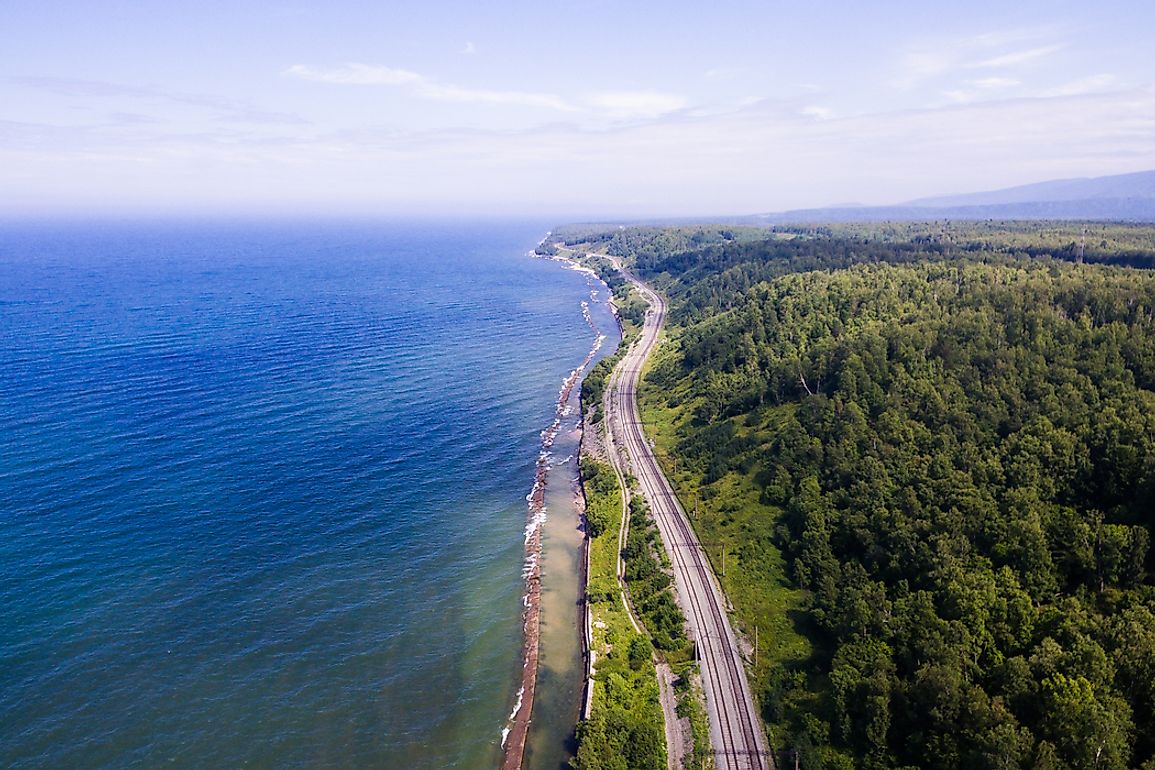
As this we explore the largest nations, we visit five different continents, some of the world’s most spectacular geography, and every type of climate imaginable.
Excitingly, it’s always changing, too: history has taught that geopolitical boundaries shift dramatically as the centuries pass. In the next decades, who’s to say which countries will become the world’s largest?
When 11.5 percent of all the land in the entire world is claimed by just one country, it’s not surprising to learn that the tenth largest country (Algeria) could fit into the largest (Russia) seven times over. When all 10 of the world's largest countries are taken together, they total 49% of the earth's entire 149 million square kilometres of land.
10 – Algeria
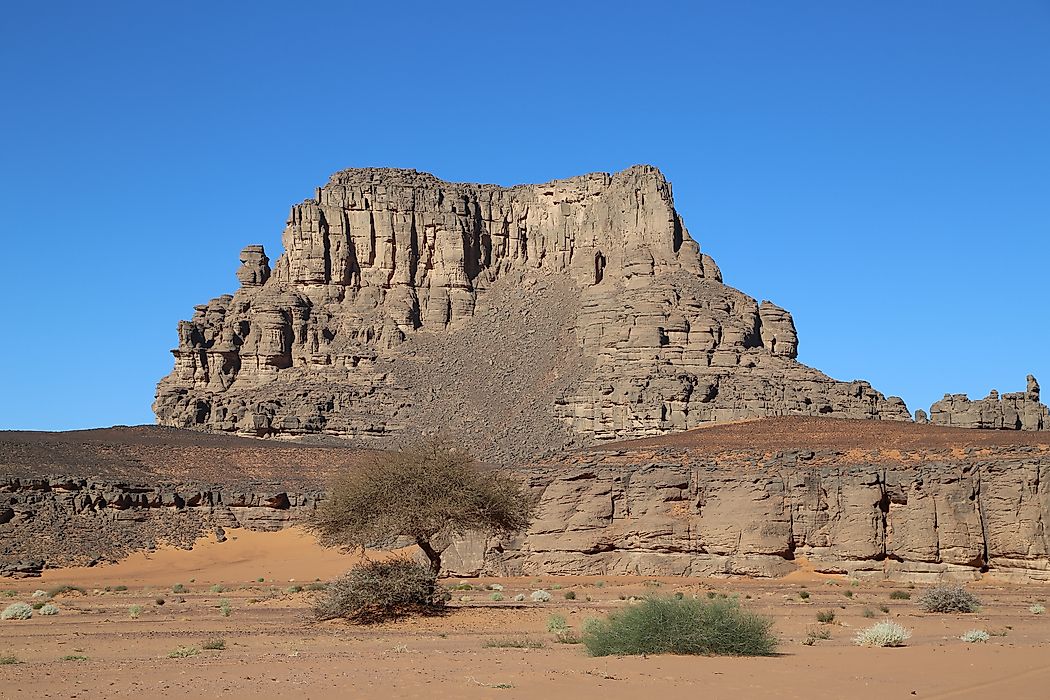
Situated in Northern Africa, Algeria has a Mediterranean coastline 998 km long. 90 percent of the country is desert, and much of its desert regions are highly elevated. The Tell Atlas mountain range runs along the country’s northern border, while the interior, much of it hundreds of meters above sea level, contains the Algerian portion of the Sahara desert. The massive Algerian Sahara extends all the way to the south of the country past its borders with Niger and Mali.
9 – Kazakhstan
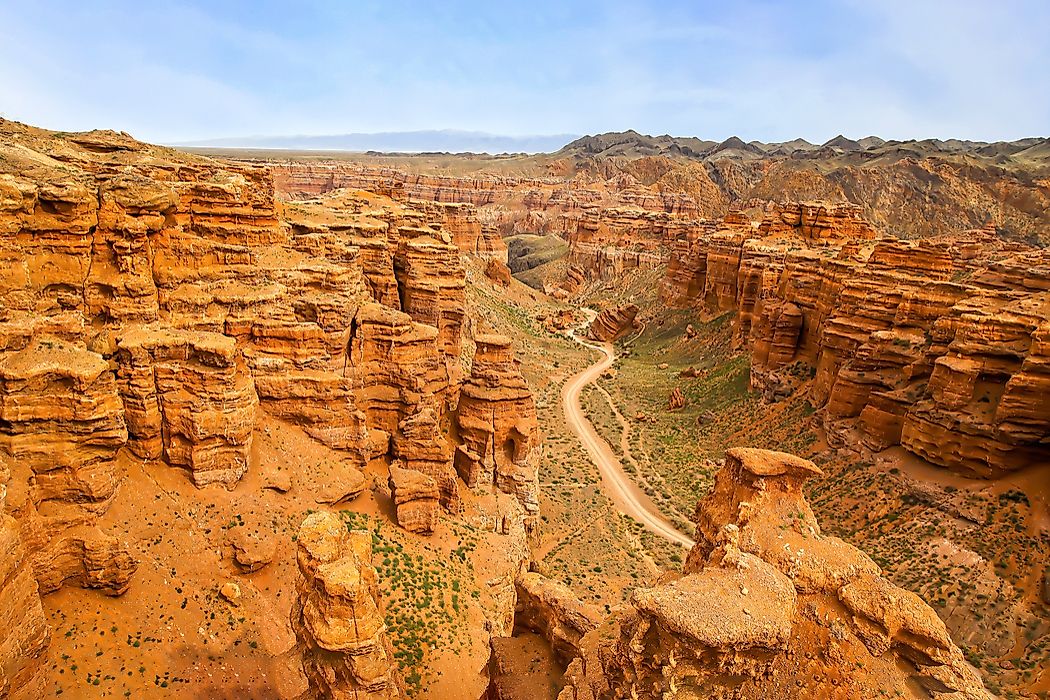
Formerly part of the USSR, the largest nation in the world for most of the 20th century, Kazakhstan’s current main claim to fame is its status as the largest landlocked country in the world—and the only landlocked country in the top 10.
8 – Argentina
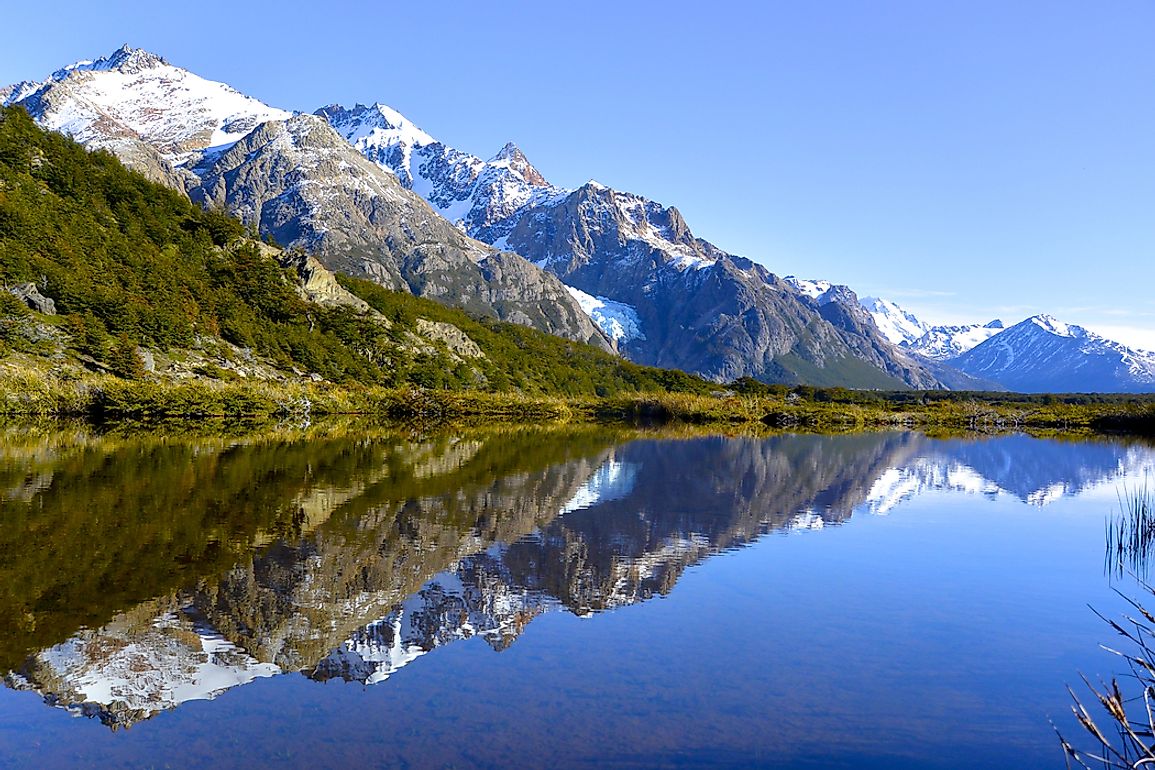
Swampy, tropical conditions in the very north give way to freezing glacial regions in the south. Patagonia, one of the most spectacular and dangerous places on the planet, stretches from the southern Andes in the west to the Atlantic Ocean in the east. The southern tip of Argentina, known as Cape Horn, is one of the stormiest locations on the globe.
7 – India
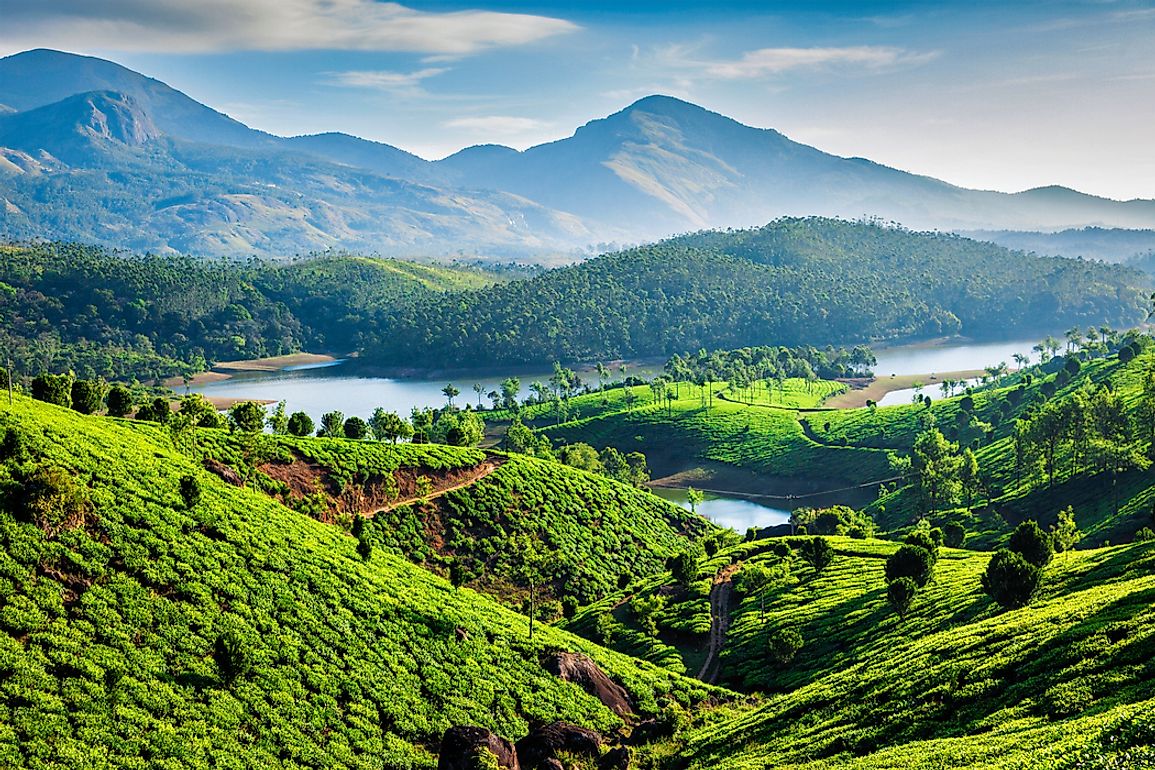
China, Afghanistan, Myanmar, Bhutan, Pakistan, Bangladesh, and Nepal each share a border with India, and its geography ranges from the majestic Himalayan Mountains to the tropical shores of the southern peninsula. Geologically, India is found on its own subcontinent, and geological studies show that this whole nation and its close neighbors were at one time separated from Asia by a sea.
6 – Australia
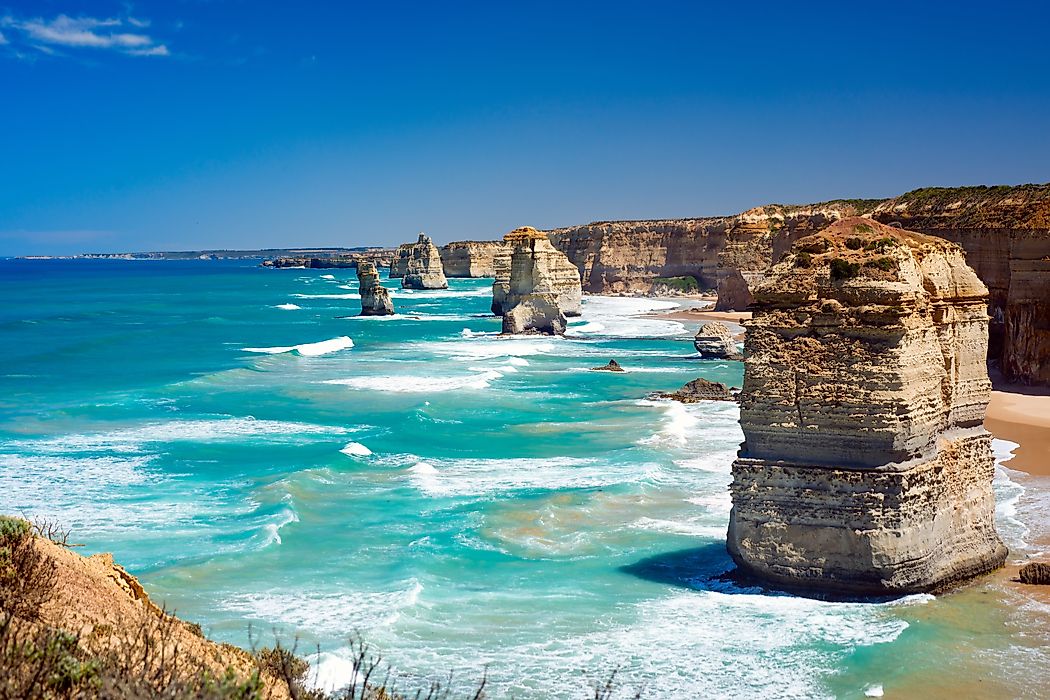
It’s the largest country in Oceania by far. Technically it is so large that it doesn’t even qualify as an island, it is a continental landmass.
The vast majority of its population live in coastal cities like Sydney in the east and Perth in the west, and with good reason: the Australian Outback is one of the world’s driest and hottest regions. Along with extreme climate and geography, Australia is known for its spectacular—and often deadly—wildlife.
5 – Brazil
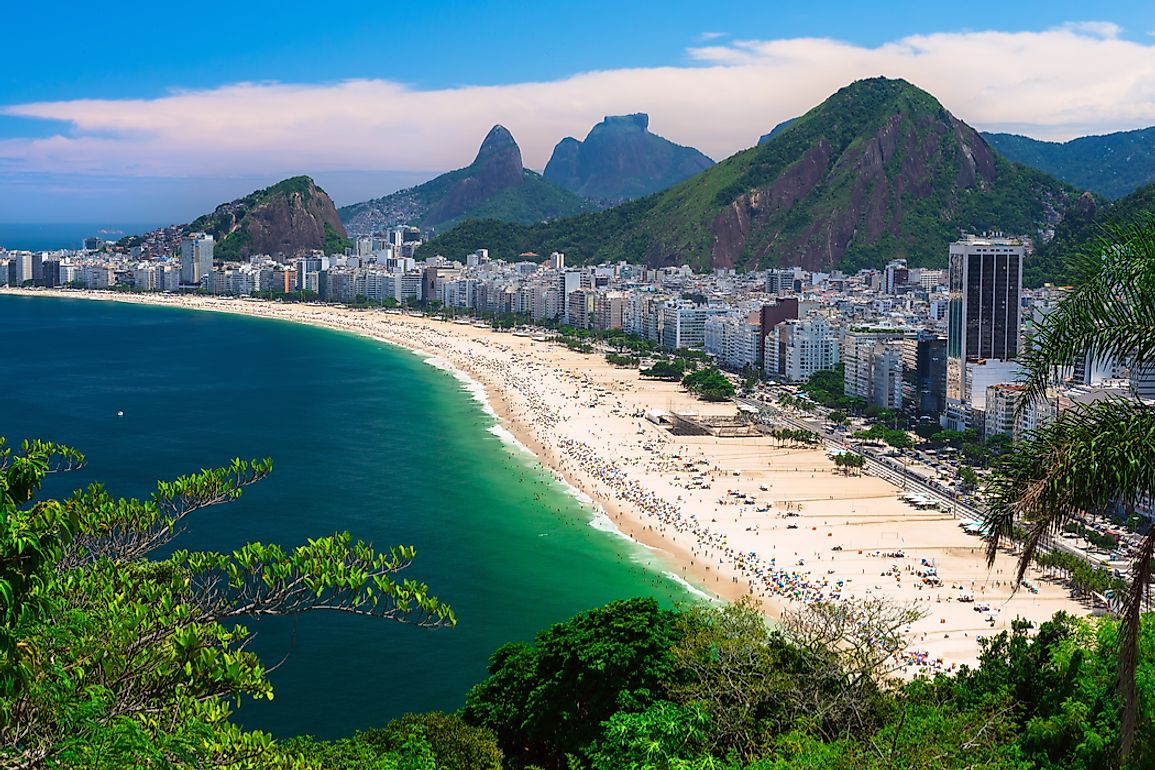
Brazil also has a lengthy Atlantic coastline on the eastern side, which stretches approximately 8,000 km. Most of its major cities, including Rio de Janeiro and São Paulo, exist near the coastline.
4 – People’s Republic of China
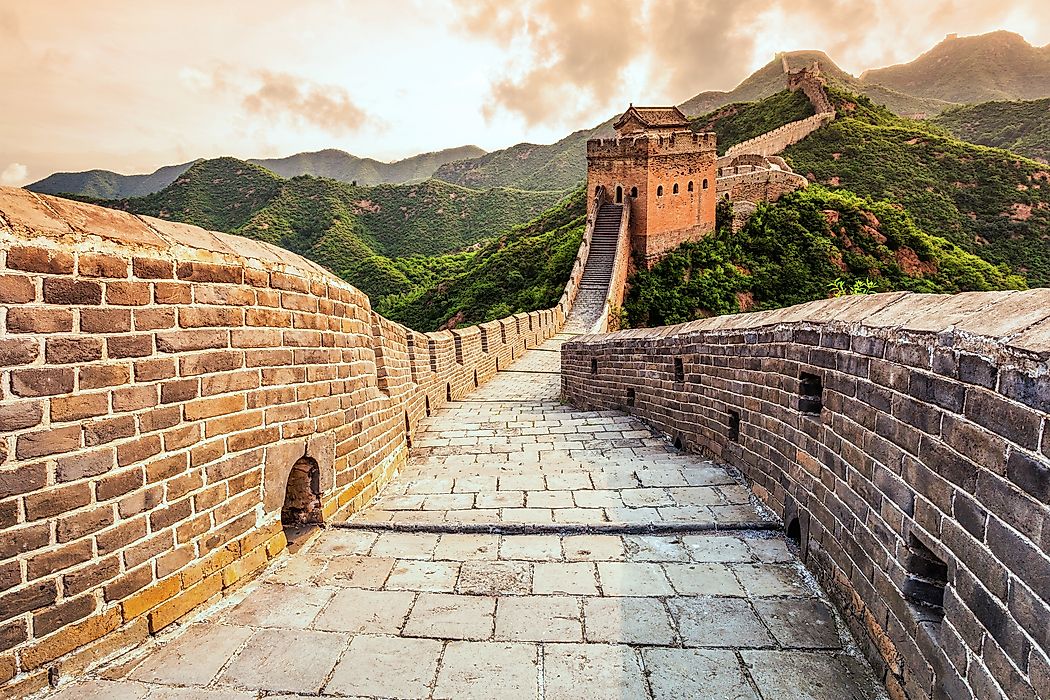
Its climate and its people vary dramatically. In the north, temperatures drop to subarctic levels, the center of the nation holds the Gobi, the world’s 4th largest desert, and in the south temperatures reach tropical levels regularly. With over 1.35 billion citizens, China is home to 56 recognized ethnic groups, has the world’s 18th largest Muslim population, the 19th largest Christian population, and with 1.9 doctors per 1000 people, China has more doctors than the entire population of Qatar.
3 – United States of America
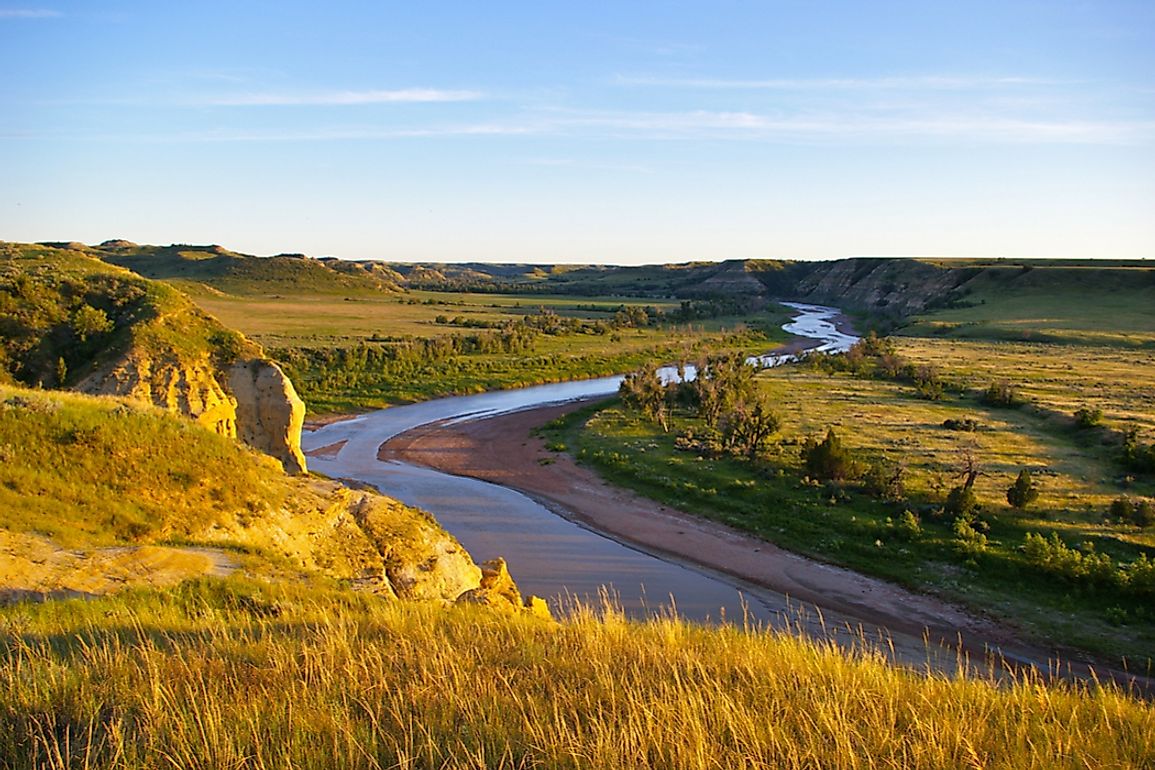
Two North-South features split the nation into three distinct pieces. West of the Rocky Mountains, the Pacific states are known for year-round temperate weather and long expanses of beach along the California coast. Sandwiched between the Rockies and the Mississippi River, the great plains stretch from Canada to Mexico, giving the United States one of the world's most fertile growing areas. Lastly, the third of the nation east of the Mississippi is the industrial and economic hub of America, with major cities spread all along the Eastern seaboard.
2 – Canada
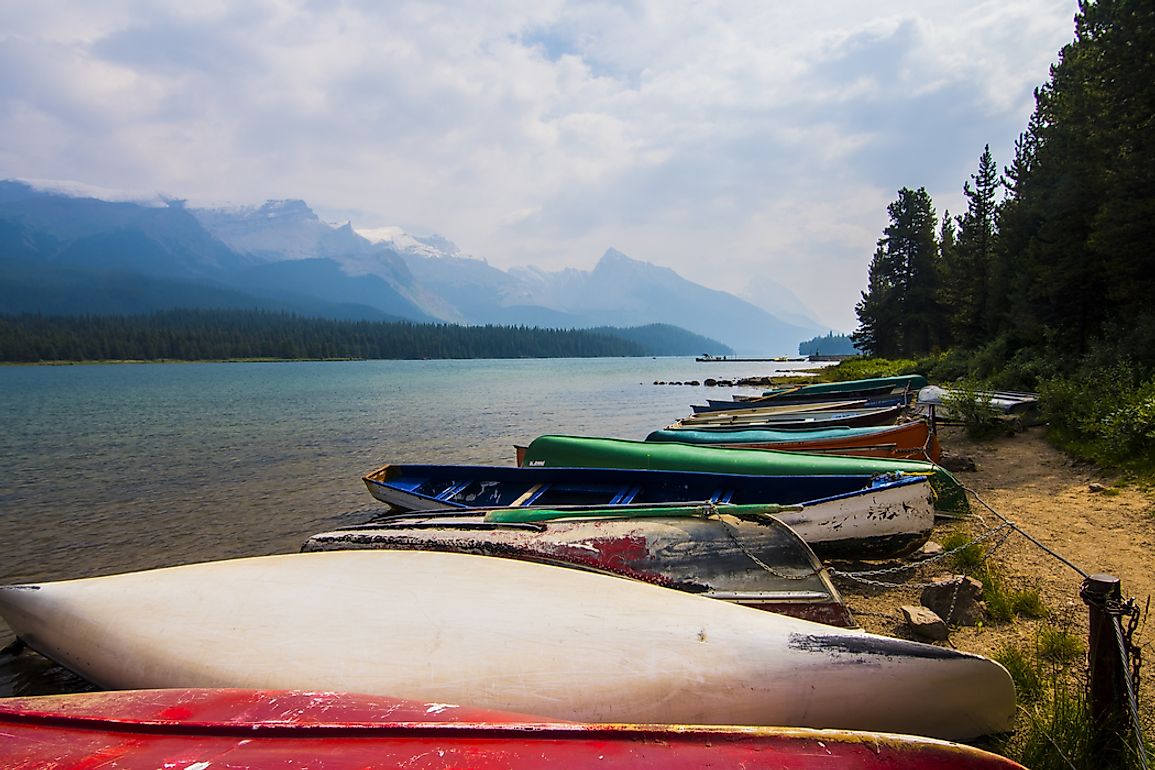
Positioned between the Arctic and the United States, Canada’s massive frozen tundra extends into the Arctic Circle. Split similar to the USA; in the western half of the country, the Rocky Mountains run north to south, and prairies provide huge grain and canola growing areas. Eastern Canada is the traditional heart of the nation, with Toronto, Montreal, and the national capital of Ottawa, all located in the East.
1 – Russia
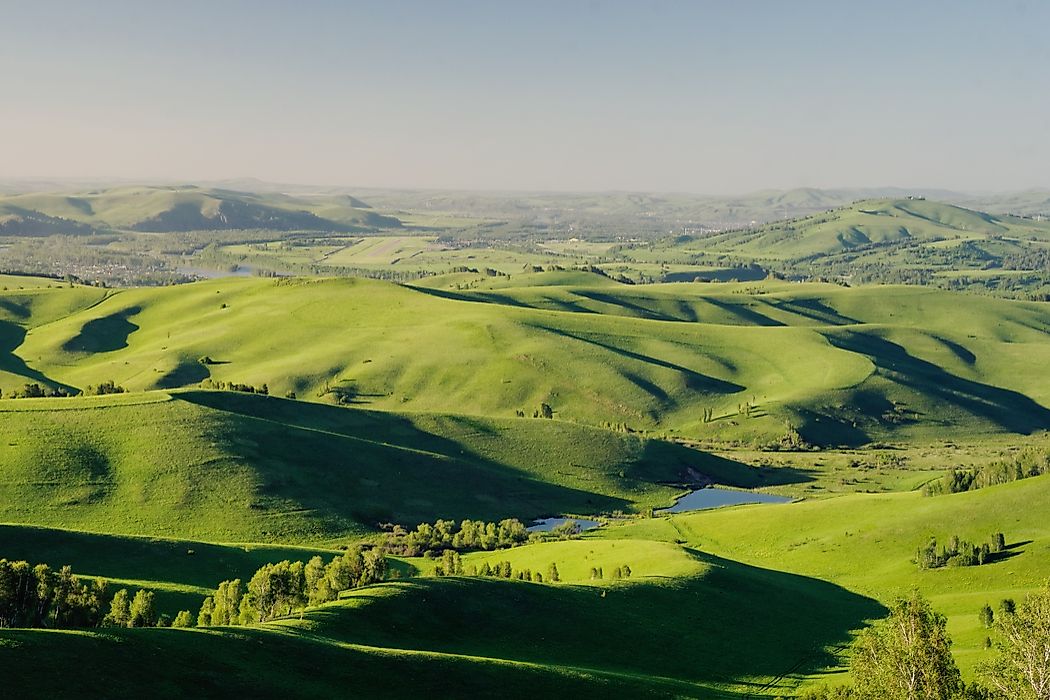
Like China, Russia borders 14 different countries. Unlike China, none of Russia is tropical, though humid summers prevail in much of southern Russia. The Taiga, the world’s largest terrestrial biome, extends all the way from Eastern Canada throughout the vast majority of northern Russia. Massive oil reserves exist underneath Russia’s frozen forests and tundra; however, due to the expense and difficulty of extracting it, much of Russia’s oil wealth remains untapped.
What's the Biggest Country in the World?
The largest country in the world is Russia, with a size of 17 million
square kilometers. Russia represents a total of 11% of the world's
total area. After Russia, the world's largest countries are Canada, the
United States, China, Brazil, and Australia.
50 Largest Countries in the World By Area
| Rank | Country | Area sq.km |
|---|---|---|
| 1 | Russia | 17,098,242 |
| 2 | Canada | 9,984,670 |
| 3 | United States (including territories) | 9,833,517 |
| 4 | China | 9,596,961 |
| 5 | Brazil | 8,515,767 |
| 6 | Australia | 7,692,024 |
| 7 | India | 3,287,263 |
| 8 | Argentina | 2,780,400 |
| 9 | Kazakhstan | 2,724,900 |
| 10 | Algeria | 2,381,741 |
| 11 | Congo, Democratic Republic of the | 2,344,858 |
| 12 | Greenland (Denmark) | 2,166,086 |
| 13 | Saudi Arabia | 2,149,690 |
| 14 | Mexico | 1,964,375 |
| 15 | Indonesia | 1,904,569 |
| 16 | Sudan | 1,861,484 |
| 17 | Libya | 1,759,540 |
| 18 | Iran | 1,648,195 |
| 19 | Mongolia | 1,564,116 |
| 20 | Peru | 1,285,216 |
| 21 | Chad | 1,284,000 |
| 22 | Niger | 1,267,000 |
| 23 | Angola | 1,246,700 |
| 24 | Mali | 1,240,192 |
| 25 | South Africa | 1,219,090 |
| 26 | Colombia | 1,138,910 |
| 27 | Ethiopia | 1,104,300 |
| 28 | Bolivia | 1,098,581 |
| 29 | Mauritania | 1,030,700 |
| 30 | Egypt | 1,001,450 |
| 31 | Tanzania | 947,300 |
| 32 | Nigeria | 923,768 |
| 33 | Venezuela | 912,050 |
| 34 | Namibia | 824,292 |
| 35 | Mozambique | 799,380 |
| 36 | Pakistan | 796,095 |
| 37 | Turkey | 783,562 |
| 38 | Chile | 756,102 |
| 39 | Zambia | 752,618 |
| 40 | Burma | 676,578 |
| 41 | Afghanistan | 652,230 |
| 42 | South Sudan | 644,329 |
| 43 | France | 643,801 |
| 44 | Somalia | 637,657 |
| 45 | Central African Republic | 622,984 |
| 46 | Ukraine | 603,550 |
| 47 | Madagascar | 587,041 |
| 48 | Botswana | 581,730 |
| 49 | Kenya | 580,367 |
| 50 | Yemen | 527,968 |
0 comments:
Post a Comment